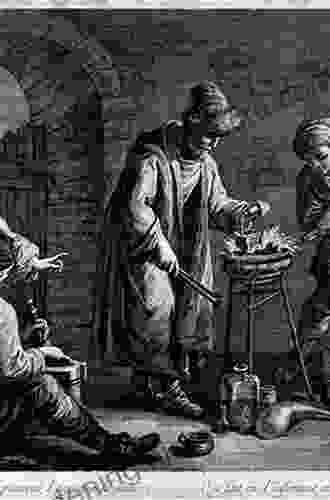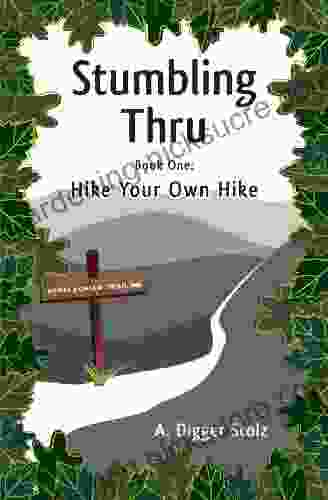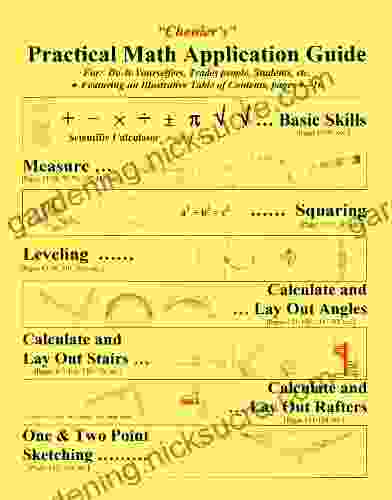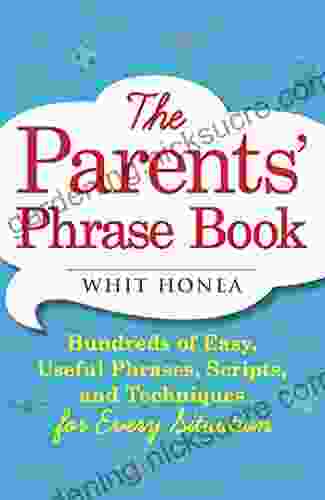The Book of the Dead: A Journey Through the Afterlife in Ancient Egypt

The Book of the Dead is one of the most famous and enigmatic texts from ancient Egypt. This funerary text, also known as the Book of Going Forth by Day or the Book of Breathings, was designed to guide the deceased through the perils of the afterlife and into eternal life. It contains spells, hymns, prayers, and illustrations that provide insights into the beliefs and practices of ancient Egyptian religion.
The Book of the Dead originated during the New Kingdom period (c. 1550-1070 BCE),although its roots can be traced back to earlier funerary texts. The earliest known version of the Book of the Dead is the Pyramid Texts, a collection of spells inscribed on the walls of royal pyramids during the Old Kingdom period (c. 2686-2181 BCE). These spells were intended to protect the pharaoh in the afterlife and ensure his safe passage to the Field of Reeds, the ancient Egyptian paradise.
Over time, the Pyramid Texts evolved into the Coffin Texts, which were written on the interior of coffins during the Middle Kingdom period (c. 2055-1650 BCE). The Coffin Texts expanded on the spells found in the Pyramid Texts and included additional hymns and prayers.
4.7 out of 5
| Language | : | English |
| File size | : | 18708 KB |
| Text-to-Speech | : | Enabled |
| Screen Reader | : | Supported |
| Enhanced typesetting | : | Enabled |
| Word Wise | : | Enabled |
| Print length | : | 993 pages |
By the New Kingdom period, the Book of the Dead had become a fully developed funerary text. It was written on papyrus scrolls and illustrated with colorful vignettes. The Book of the Dead was not a standardized text, but rather a collection of spells and prayers that could be customized to meet the needs of the individual deceased.
The Book of the Dead is divided into 190 chapters, each of which contains a specific spell or prayer. The chapters are organized into four main sections:
- The Spells of the Day: These spells are designed to protect the deceased from the dangers of the afterlife, such as demons, snakes, and crocodiles. They also help the deceased to overcome obstacles, such as mountains and rivers.
- The Spells of the Night: These spells are designed to help the deceased navigate the underworld and reach the Field of Reeds. They also provide protection from the forces of chaos and destruction.
- The Book of Gates: This section consists of 12 gates, each of which is guarded by a god or goddess. The deceased must recite the correct spells to pass through the gates and reach the Field of Reeds.
- The Book of Caverns: This section consists of 15 caverns, each of which contains a different trial or challenge. The deceased must overcome these challenges in order to reach the Field of Reeds.
In addition to these four main sections, the Book of the Dead also contains a number of hymns and prayers. These hymns and prayers are addressed to various gods and goddesses, and they ask for their protection and assistance in the afterlife.
The Book of the Dead is a vital source of information about ancient Egyptian beliefs and practices regarding the afterlife. It provides insights into the complex and often contradictory nature of ancient Egyptian religion. The Book of the Dead also sheds light on the importance of funerary rituals and the role of magic in ancient Egyptian society.
The Book of the Dead was an essential part of ancient Egyptian funerary practices. It was believed that the spells and prayers contained in the book would help the deceased to overcome the challenges of the afterlife and achieve eternal life. The Book of the Dead was also a source of comfort for the living, as it provided them with a sense of hope and reassurance about the fate of their loved ones in the afterlife.
The Book of the Dead has had a significant impact on Western culture. It has been translated into numerous languages and has been studied by scholars for centuries. The Book of the Dead has also been a source of inspiration for artists, writers, and musicians.
In the 19th century, the Book of the Dead became a popular subject for Egyptologists and other scholars. The first English translation of the Book of the Dead was published in 1895 by E.A. Wallis Budge. Budge's translation made the Book of the Dead accessible to a wider audience, and it helped to fuel the growing interest in ancient Egypt that was prevalent at the time.
The Book of the Dead has also been a source of inspiration for artists and writers. The surrealist painter Salvador Dali was particularly fascinated by the Book of
4.7 out of 5
| Language | : | English |
| File size | : | 18708 KB |
| Text-to-Speech | : | Enabled |
| Screen Reader | : | Supported |
| Enhanced typesetting | : | Enabled |
| Word Wise | : | Enabled |
| Print length | : | 993 pages |
Do you want to contribute by writing guest posts on this blog?
Please contact us and send us a resume of previous articles that you have written.
 Fiction
Fiction Non Fiction
Non Fiction Romance
Romance Mystery
Mystery Thriller
Thriller SciFi
SciFi Fantasy
Fantasy Horror
Horror Biography
Biography Selfhelp
Selfhelp Business
Business History
History Classics
Classics Poetry
Poetry Childrens
Childrens Young Adult
Young Adult Educational
Educational Cooking
Cooking Travel
Travel Lifestyle
Lifestyle Spirituality
Spirituality Health
Health Fitness
Fitness Technology
Technology Science
Science Arts
Arts Crafts
Crafts DIY
DIY Gardening
Gardening Petcare
Petcare Leslie Leyland Fields
Leslie Leyland Fields 1st Ed 2016 Edition Kindle Edition
1st Ed 2016 Edition Kindle Edition Buddy Martin
Buddy Martin 006 Edition Kindle Edition
006 Edition Kindle Edition Brian Kent
Brian Kent Edward Frenkel
Edward Frenkel Jay Cassell
Jay Cassell Lars Behnke
Lars Behnke Roselyn Teukolsky
Roselyn Teukolsky Joe Oliver
Joe Oliver Louis Liebenberg
Louis Liebenberg Richard Bromfield
Richard Bromfield Nikki Grimes
Nikki Grimes Bruce Watson
Bruce Watson Theodore X O Connell
Theodore X O Connell Pamela Adams
Pamela Adams Bob Welch
Bob Welch Justin Doyle
Justin Doyle Jd Brown
Jd Brown Cassandra Johnson
Cassandra Johnson Starley Talbott
Starley Talbott Kristi K Hoffman
Kristi K Hoffman Ben Egginton
Ben Egginton Deepak Chopra
Deepak Chopra Stephen P Anderson
Stephen P Anderson Lareina Rule
Lareina Rule Natasha Preston
Natasha Preston Gary S Thorpe
Gary S Thorpe 3rd Ed Edition Kindle Edition
3rd Ed Edition Kindle Edition Jordan Ifueko
Jordan Ifueko Miranda Castro
Miranda Castro Sarah Templeton
Sarah Templeton 2005th Edition Kindle Edition
2005th Edition Kindle Edition Chris Froome
Chris Froome Sheryl Crow
Sheryl Crow Elizabeth Wenk
Elizabeth Wenk Jasper Godwin Ridley
Jasper Godwin Ridley Elizabeth Bradfield
Elizabeth Bradfield Ellen Levitt
Ellen Levitt David Beaupre
David Beaupre Justin Bower
Justin Bower Kyla Stone
Kyla Stone Gina Rae La Cerva
Gina Rae La Cerva Jasmine Greene
Jasmine Greene Diane Duane
Diane Duane Alec Crawford
Alec Crawford Breanna Lam
Breanna Lam Patricia Stevens
Patricia Stevens Bill Reif
Bill Reif Nancy Keene
Nancy Keene J Morgan Mcgrady
J Morgan Mcgrady Suzie Cooney
Suzie Cooney Tami Lynn Kent
Tami Lynn Kent Mimi Lemay
Mimi Lemay Mark Brazil
Mark Brazil Jo Frost
Jo Frost Christoph Delp
Christoph Delp 50minutes Com
50minutes Com Jong Chul Ye
Jong Chul Ye Chris I Naylor
Chris I Naylor Alessa Ellefson
Alessa Ellefson John Kreiter
John Kreiter John Iceland
John Iceland Andrew Collins
Andrew Collins Donna M Mertens
Donna M Mertens Laura Bright
Laura Bright Ernest Shackleton
Ernest Shackleton Jason Miller
Jason Miller Jacquetta Hawkes
Jacquetta Hawkes Heather Job
Heather Job David Cheng
David Cheng Geoffrey West
Geoffrey West John A Yoegel
John A Yoegel Miko Flohr
Miko Flohr Jonathan Ross
Jonathan Ross Jeff Gill
Jeff Gill Nnedi Okorafor
Nnedi Okorafor Justine Brooks Froelker
Justine Brooks Froelker Seymour Simon
Seymour Simon Barbara Klein
Barbara Klein Kerri Maniscalco
Kerri Maniscalco Patricia O Quinn
Patricia O Quinn Samantha Lovely
Samantha Lovely Andrew Maraniss
Andrew Maraniss Patricia Moore Pastides
Patricia Moore Pastides Ricki E Kantrowitz
Ricki E Kantrowitz Bernard Rosner
Bernard Rosner Robert Thurston
Robert Thurston John Green
John Green Natalie Smith
Natalie Smith Sam Irwin
Sam Irwin Paul Deepan
Paul Deepan Martin Mobraten
Martin Mobraten Icon Digital Publishing
Icon Digital Publishing Linda A Roussel
Linda A Roussel Dominik Hartmann
Dominik Hartmann Bryan Smith
Bryan Smith G I Gurdjieff
G I Gurdjieff Temple Grandin
Temple Grandin Claudio De Castro
Claudio De Castro James Diego Vigil
James Diego Vigil Bonnie Scott
Bonnie Scott Carol Stock Kranowitz
Carol Stock Kranowitz Alden Jones
Alden Jones Bruno Latour
Bruno Latour James Mcnicholas
James Mcnicholas Shonna Slayton
Shonna Slayton Apsley Cherry Garrard
Apsley Cherry Garrard Brenda Dehaan
Brenda Dehaan Stewart Smith
Stewart Smith Jiichi Watanabe
Jiichi Watanabe Michael Geheran
Michael Geheran Kristine Setting Clark
Kristine Setting Clark Nick Winkelman
Nick Winkelman Michael Clarke
Michael Clarke Sloane Mcclain
Sloane Mcclain Lj Rivers
Lj Rivers Janetti Marotta
Janetti Marotta Leonard Pellman
Leonard Pellman Don Fink
Don Fink Bobby Blair
Bobby Blair Josh Elster
Josh Elster Michael Romano
Michael Romano Garrett Grolemund
Garrett Grolemund Joe Cuhaj
Joe Cuhaj Nathan Jendrick
Nathan Jendrick Dervla Murphy
Dervla Murphy Ulla Sarmiento
Ulla Sarmiento Lois Duncan
Lois Duncan A Christine Harris
A Christine Harris Oscar Wegner
Oscar Wegner Michael S Gazzaniga
Michael S Gazzaniga Skye Genaro
Skye Genaro Brennan Barnard
Brennan Barnard Tony Horton
Tony Horton Dr Katayune Kaeni
Dr Katayune Kaeni Eric Haseltine
Eric Haseltine Nadav Snir
Nadav Snir 50minutos Es
50minutos Es Peter Wohlleben
Peter Wohlleben Jeremy Desilva
Jeremy Desilva Robert Mcentarffer
Robert Mcentarffer Robert Peter Gale
Robert Peter Gale Lucas Whitecotton
Lucas Whitecotton Greta Solomon
Greta Solomon Richard Ania
Richard Ania Rowan Ricardo Phillips
Rowan Ricardo Phillips Elizabeth D Hutchison
Elizabeth D Hutchison Leonardo Trasande
Leonardo Trasande Patrick Viafore
Patrick Viafore Patricia S Potter Efron
Patricia S Potter Efron Greg Midland
Greg Midland Lin Pardey
Lin Pardey Naomi Scott
Naomi Scott E Bruce Goldstein
E Bruce Goldstein Ziemowit Wojciechowski
Ziemowit Wojciechowski Robert S Mueller
Robert S Mueller Clint Malarchuk
Clint Malarchuk Grant Thompson
Grant Thompson Gregory A Boyd
Gregory A Boyd Sadie Radinsky
Sadie Radinsky Amy Chua
Amy Chua Syougo Kinugasa
Syougo Kinugasa Daphne Adler
Daphne Adler Geri Ann Galanti
Geri Ann Galanti Kevin Paul
Kevin Paul Maureen Johnson
Maureen Johnson 1st Edition Kindle Edition
1st Edition Kindle Edition A Digger Stolz
A Digger Stolz Keith Siragusa
Keith Siragusa Dinokids Press
Dinokids Press Olszewski Marie Erin
Olszewski Marie Erin 4th Edition Kindle Edition With Audio Video
4th Edition Kindle Edition With Audio Video William Regal
William Regal Steve Magness
Steve Magness Betty Crocker
Betty Crocker Raymond H Thompson
Raymond H Thompson Manuel De La Cruz
Manuel De La Cruz John Hands
John Hands Kekla Magoon
Kekla Magoon Jason Curtis
Jason Curtis 4th Edition Kindle Edition
4th Edition Kindle Edition Andrea Wulf
Andrea Wulf Fata Ariu Levi
Fata Ariu Levi Eric I Karchmer
Eric I Karchmer Dave Gerr
Dave Gerr Rick Gurnsey
Rick Gurnsey Tom Mchale
Tom Mchale Riddleland
Riddleland Wong Kiew Kit
Wong Kiew Kit 2nd Edition Kindle Edition
2nd Edition Kindle Edition Charles Seife
Charles Seife Jozef Nauta
Jozef Nauta J Michael Leger
J Michael Leger Russell Miller
Russell Miller 2012th Edition Kindle Edition
2012th Edition Kindle Edition Carl J Sindermann
Carl J Sindermann Dan Falk
Dan Falk Dr Danny Penman
Dr Danny Penman Ellen Sue Turner
Ellen Sue Turner Kennedy Achille
Kennedy Achille Mei Fong
Mei Fong George W E Nickelsburg
George W E Nickelsburg Janet Sasson Edgette
Janet Sasson Edgette Terence Grieder
Terence Grieder Anthony Arvanitakis
Anthony Arvanitakis Gershon Ben Keren
Gershon Ben Keren Jon Dunn
Jon Dunn Jenifer Fox
Jenifer Fox Mitch Rubman
Mitch Rubman Monica Sorrenson
Monica Sorrenson Al Ford
Al Ford Frank Sargeant
Frank Sargeant Mary H K Choi
Mary H K Choi Leigh Calvez
Leigh Calvez Joe Chilson
Joe Chilson Debra Pascali Bonaro
Debra Pascali Bonaro Sam Goulden
Sam Goulden Katie M John
Katie M John John Collins
John Collins Allan Mundsack
Allan Mundsack Brooklyn James
Brooklyn James Dan Blackburn
Dan Blackburn J D Salinger
J D Salinger Chase Williams
Chase Williams Theodor W Adorno
Theodor W Adorno Heather Rain Mazen Korbmacher
Heather Rain Mazen Korbmacher Meik Wiking
Meik Wiking Emma Lord
Emma Lord Howard Mudd
Howard Mudd Gianni La Forza
Gianni La Forza Peter Cossins
Peter Cossins Micah Goodman
Micah Goodman Jeffrey A Greene
Jeffrey A Greene Cindy Kennedy
Cindy Kennedy Louis Stanislaw
Louis Stanislaw Debra Barnes
Debra Barnes Steve Garnett
Steve Garnett Eloise Jarvis Mcgraw
Eloise Jarvis Mcgraw Peter Dewhurst
Peter Dewhurst Iris Bohnet
Iris Bohnet Claire Sierra
Claire Sierra Susan Walker
Susan Walker Laurie Forest
Laurie Forest Jay Wilkinson
Jay Wilkinson Eva Feder Kittay
Eva Feder Kittay Mark Hatmaker
Mark Hatmaker Liesbet Collaert
Liesbet Collaert Billie Jean King
Billie Jean King Juno Dawson
Juno Dawson Margaret Littman
Margaret Littman Steven D Levitt
Steven D Levitt Katie J Trent
Katie J Trent Aly Madhavji
Aly Madhavji Jean Clottes
Jean Clottes Gregory Collins
Gregory Collins David Lloyd Kilmer
David Lloyd Kilmer Emma Dalton
Emma Dalton Erika Bornman
Erika Bornman David Kushner
David Kushner Mike Tyson
Mike Tyson Neal Bascomb
Neal Bascomb Mark V Wiley
Mark V Wiley Patrick Lange
Patrick Lange Pat Dorsey
Pat Dorsey 7th Edition Kindle Edition
7th Edition Kindle Edition Kate Spencer
Kate Spencer Theris A Touhy
Theris A Touhy Sherry Monahan
Sherry Monahan Lewis Henry Morgan
Lewis Henry Morgan Chris Lehto
Chris Lehto Bree Moore
Bree Moore Michael W Ford
Michael W Ford Robert Bauval
Robert Bauval Chris Stewart
Chris Stewart Kerry Fraser
Kerry Fraser Gail Craswell
Gail Craswell Eric Dominy
Eric Dominy Yan Shen
Yan Shen Lenora Ucko
Lenora Ucko A C Grayling
A C Grayling 3rd Edition Kindle Edition
3rd Edition Kindle Edition David Simkins
David Simkins Alice Ginott
Alice Ginott 5th Edition Kindle Edition
5th Edition Kindle Edition Stefan Hofer
Stefan Hofer L Ulloque
L Ulloque Dr Brenda Stratton
Dr Brenda Stratton Rashad Jennings
Rashad Jennings Kelly Skeen
Kelly Skeen Muata Ashby
Muata Ashby Duy Tran
Duy Tran Tony Hernandez Pumarejo
Tony Hernandez Pumarejo Martha Menchaca
Martha Menchaca Joseph E Garland
Joseph E Garland Thomas R Baechle
Thomas R Baechle Andrew G Marshall
Andrew G Marshall A R Bernard
A R Bernard Leon Anderson
Leon Anderson Bertolt Brecht
Bertolt Brecht Patrick Hunt
Patrick Hunt Tom Lyons
Tom Lyons Dalai Lama
Dalai Lama Justin Hammond
Justin Hammond Jessica Shortall
Jessica Shortall Raymond Buckland
Raymond Buckland Tok Hui Yeap Rd Csp Ld
Tok Hui Yeap Rd Csp Ld Robert Pondiscio
Robert Pondiscio Subsequent Edition Kindle Edition
Subsequent Edition Kindle Edition Kenny Casanova
Kenny Casanova Jacqueeia Ferguson
Jacqueeia Ferguson Prerna Lal
Prerna Lal George Pendle
George Pendle Paul Martin
Paul Martin Simon G Thompson
Simon G Thompson Andrew Weber
Andrew Weber Max Domi
Max Domi Jamaica Stevens
Jamaica Stevens Nate G Hilger
Nate G Hilger Tyler Vanderweele
Tyler Vanderweele Marie Louise Von Franz
Marie Louise Von Franz Robert A Johnson
Robert A Johnson Harry Middleton
Harry Middleton Tracy Gharbo
Tracy Gharbo Tasha Dunn
Tasha Dunn Freda Mcmanus
Freda Mcmanus Bookrags Com
Bookrags Com Steve Kantner
Steve Kantner Naomi Feil
Naomi Feil P G Maxwell Stuart
P G Maxwell Stuart Thomas Wentworth Higginson
Thomas Wentworth Higginson Vibrant Publishers
Vibrant Publishers Marisha Pessl
Marisha Pessl A C Davison
A C Davison 1st English Ed Edition Kindle Edition
1st English Ed Edition Kindle Edition Manhattan Prep
Manhattan Prep Edward Rosenfeld
Edward Rosenfeld Emily A Duncan
Emily A Duncan Deanne Howell
Deanne Howell Whit Honea
Whit Honea Jamie Hand
Jamie Hand Christa Orecchio
Christa Orecchio Andy Charalambous
Andy Charalambous Filipe Masetti Leite
Filipe Masetti Leite Heather Demetrios
Heather Demetrios Mohamed Elgendy
Mohamed Elgendy Broccoli Lion
Broccoli Lion Andrew Shapland
Andrew Shapland Mauricio Cabrini
Mauricio Cabrini Christy Jordan
Christy Jordan Theresa Cheung
Theresa Cheung Josh Mulvihill
Josh Mulvihill Barnett Rich
Barnett Rich Tom Pyszczynski
Tom Pyszczynski John Gribbin
John Gribbin Tim R Wolf
Tim R Wolf Dan Wingreen
Dan Wingreen William A Dembski
William A Dembski Z Justin Ren
Z Justin Ren Michaela Stith
Michaela Stith Monte Burch
Monte Burch Aubrey Clayton
Aubrey Clayton Caroline Porter Thomas
Caroline Porter Thomas L S Boos
L S Boos Edyta Roszko
Edyta Roszko Robert K Tyson
Robert K Tyson Mark Gregston
Mark Gregston Chris Dietzel
Chris Dietzel Christopher Mcdougall
Christopher Mcdougall Nathalie Dupree
Nathalie Dupree Terrence Real
Terrence Real Elaine Beaumont
Elaine Beaumont Patrick E Mcgovern
Patrick E Mcgovern Susan E Cayleff
Susan E Cayleff Christopher Lakeman
Christopher Lakeman Lee Smolin
Lee Smolin Porter Fox
Porter Fox Karl Morris
Karl Morris Sandra Mizumoto Posey
Sandra Mizumoto Posey Andre Norton
Andre Norton Lesli Richards
Lesli Richards Collins Gcse
Collins Gcse Kate Usher
Kate Usher Jillian Dodd
Jillian Dodd Hong Chen
Hong Chen Elizabeth Sims
Elizabeth Sims Diamond Wilson
Diamond Wilson Richard Adams
Richard Adams Jack M Bloom
Jack M Bloom Kristen Riecke
Kristen Riecke Amy Ogle
Amy Ogle Bernard Cornwell
Bernard Cornwell Rifujin Na Magonote
Rifujin Na Magonote James D Long
James D Long Evan Brashier
Evan Brashier Glenn N Levine
Glenn N Levine Oliver Theobald
Oliver Theobald Karen Myers
Karen Myers 6th Edition Kindle Edition
6th Edition Kindle Edition Alan Jacobs
Alan Jacobs Kelly Slater
Kelly Slater Marcia Verduin
Marcia Verduin 8th Edition Kindle Edition
8th Edition Kindle Edition Shelby Hailstone Law
Shelby Hailstone Law Gayle Jervis
Gayle Jervis Claire Baker
Claire Baker Dustyn Roberts
Dustyn Roberts Melissa Cheyney
Melissa Cheyney L Madison
L Madison Jim Burns
Jim Burns Herbert Feigl
Herbert Feigl John Coleman
John Coleman Marty Bartholomew
Marty Bartholomew Joseph Chilton Pearce
Joseph Chilton Pearce Robert Ferguson
Robert Ferguson Terence N D Altroy
Terence N D Altroy Brian Thompson
Brian Thompson Cynthia Bourgeault
Cynthia Bourgeault Robert Venditti
Robert Venditti Adam Silvera
Adam Silvera Roger Gordon
Roger Gordon Eli Boschetto
Eli Boschetto Michael Alvear
Michael Alvear Gregory J Privitera
Gregory J Privitera John Gookin
John Gookin Paul Johnson
Paul Johnson
Light bulbAdvertise smarter! Our strategic ad space ensures maximum exposure. Reserve your spot today!

 Clarence MitchellThe Boys From Old Florida Inside Gator Nation: A Legacy of Excellence and...
Clarence MitchellThe Boys From Old Florida Inside Gator Nation: A Legacy of Excellence and...
 Raymond ParkerA Comprehensive Guide for Nurses and Interprofessional Teams: Empowering...
Raymond ParkerA Comprehensive Guide for Nurses and Interprofessional Teams: Empowering... Jacob FosterFollow ·15.9k
Jacob FosterFollow ·15.9k Ivan TurgenevFollow ·9.5k
Ivan TurgenevFollow ·9.5k Joel MitchellFollow ·4.7k
Joel MitchellFollow ·4.7k Thomas PowellFollow ·6.2k
Thomas PowellFollow ·6.2k Galen PowellFollow ·18.1k
Galen PowellFollow ·18.1k Jack ButlerFollow ·11.2k
Jack ButlerFollow ·11.2k Hugo CoxFollow ·8.3k
Hugo CoxFollow ·8.3k Jack PowellFollow ·6.4k
Jack PowellFollow ·6.4k

 Finn Cox
Finn CoxA Comprehensive Guide for Budding Inventors and Backyard...
For those with a restless mind and a...

 Forrest Reed
Forrest ReedThe Ultimate Shopper's Guide to Purchasing Weight Lifting...
Are you looking...

 Dillon Hayes
Dillon HayesThe Chemical Choir: Unveiling the Enchanting Symphony of...
In the enigmatic realm of science, where...

 Ryūnosuke Akutagawa
Ryūnosuke AkutagawaStumbling Thru: Hike Your Own Hike
In the realm of outdoor adventures,...

 Terry Pratchett
Terry PratchettUnlock Your Math Skills: A Comprehensive Guide to Chenier...
Math plays a vital role in...
4.7 out of 5
| Language | : | English |
| File size | : | 18708 KB |
| Text-to-Speech | : | Enabled |
| Screen Reader | : | Supported |
| Enhanced typesetting | : | Enabled |
| Word Wise | : | Enabled |
| Print length | : | 993 pages |










